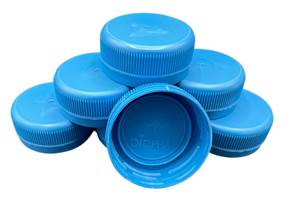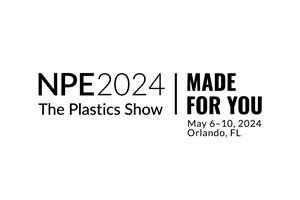Wood on Plastics: Consumer Products Creep Toward Recovery
The outlook for many segments of consumer products is reminiscent of the Beatles’ song “It’s Getting Better All the Time.” So far in2010, consumer spending has exceeded most analysts’ predictions at the end of last year.
The outlook for many segments of consumer products is reminiscent of the Beatles’ song “It’s Getting Better All the Time.” So far in
2010, consumer spending has exceeded most analysts’ predictions at the end of last year. Yet there is still some distance to go before we can use the word recovery. A number of hurdles lie ahead before the consumer sector returns to the robust state of spending growth that would qualify as a self-sustaining rebound. Right now, most of the trends are moving in the right direction. The forecast for 2010 is for inflation-adjusted growth of 2% to 3% in spending on all consumer products. In 2011, growth will accelerate to 4-5%.
Consumer products lately have been one of the most carefully scrutinized sectors in the whole economy. One reason is that consumers account for more than two-thirds of the nation’s GDP. For good or bad, we are a consumption-based economy, and there can be no lasting economic expansion without strong participation from consumers. A second and more important reason is that the consumer sector was by far the hardest hit by the Great Recession. Home values, retirement savings, and employment levels were severely damaged, and through the first half of 2010, they have been slow to recover.
Time will eventually heal these wounds, but manufacturers of consumer products should expect some lasting effects of the past downturn. Two trends that are already well established as we emerge from the recession are a higher rate of household savings and a decline in consumer debt. These trends will be good for the economy in the long-run, but in the short-term it means that Americans are cutting back on spending for non-essential items.
Another long-term factor that will have growing influence on consumer spending is the rising price of energy and raw materials such as steel and resins. Prices for crude oil and steel are already at very high levels, especially when you consider that we are in a very early stage of an economic recovery. They most certainly will go higher as the recovery gains momentum. This, combined with April’s catastrophic oil spill in the Gulf of Mexico, will keep energy efficiency and recyclability uppermost in the minds of consumers for the foreseeable future.
Finally, demand for many categories of consumer products is linked to trends in residential construction and real estate. In other words, if it is a good time for many households to buy or build a house, it is also a good time for homeowners to purchase items such as sporting goods, lawn and garden products, and housewares. It will take at least another year before the construction and real estate markets generate any real momentum, but when they do, this will be a strong signal to manufacturers of consumer products to prepare for accelerating demand growth.
WHAT THIS MEANS TO YOU
- Consumers are becoming more value conscious and less image conscious. This shift will be increasingly noticeable. For processors serving this market, it’s best to focus on function rather than form.
- Rising prices of raw materials and the corresponding rise in awareness of recyclability and sustainability will be a trend that affects both producers and users of consumer products.
- Both of these trends will put a premium on product design. Demand for many types of consumer products will be generated by their ability to solve a range of functional and environmental problems more than aesthetic appeal. Today more than ever, OEMs are pushing both plastics suppliers and moldmakers for help in this area.
About the Author
Bill Wood, an economist specializing in the plastics industry, heads up Mountaintop Economics & Research, Inc. in Greenfield, Mass. Contact BillWood@PlasticsEconomics.com.
Related Content
Breaking News From NPE2024
Here is a firsthand report of news in injection molding, extrusion, blow molding and recycling not previously covered.
Read MorePHA Compound Molded into “World’s First” Biodegradable Bottle Closures
Beyond Plastic and partners have created a certified biodegradable PHA compound that can be injection molded into 38-mm closures in a sub 6-second cycle from a multicavity hot runner tool.
Read MoreProcessing Megatrends Drive New Product Developments at NPE2024
It’s all about sustainability and the circular economy, and it will be on display in Orlando across all the major processes. But there will be plenty to see in automation, AI and machine learning as well.
Read MoreMultilayer Solutions to Challenges in Blow Molding with PCR
For extrusion blow molders, challenges of price and availability of postconsumer recycled resins can be addressed with a variety of multilayer technologies, which also offer solutions to issues with color, processability, mechanical properties and chemical migration in PCR materials.
Read MoreRead Next
See Recyclers Close the Loop on Trade Show Production Scrap at NPE2024
A collaboration between show organizer PLASTICS, recycler CPR and size reduction experts WEIMA and Conair recovered and recycled all production scrap at NPE2024.
Read MorePeople 4.0 – How to Get Buy-In from Your Staff for Industry 4.0 Systems
Implementing a production monitoring system as the foundation of a ‘smart factory’ is about integrating people with new technology as much as it is about integrating machines and computers. Here are tips from a company that has gone through the process.
Read MoreMaking the Circular Economy a Reality
Driven by brand owner demands and new worldwide legislation, the entire supply chain is working toward the shift to circularity, with some evidence the circular economy has already begun.
Read More









